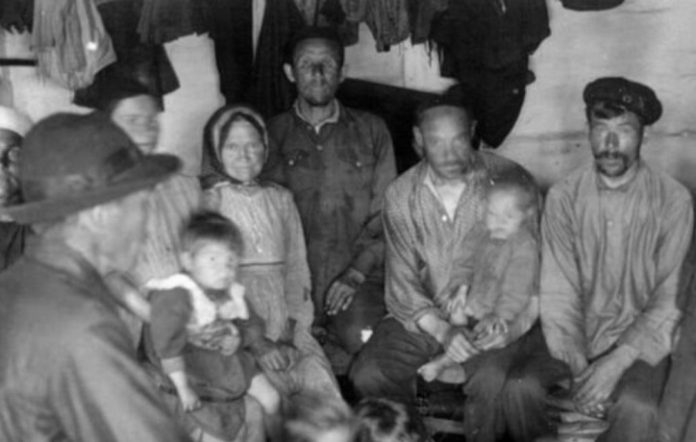
History 05/03/20 Nazinskogo tragedy: the worst case in the history of the Gulag
19 may 1933 more than 6,000 prisoners who were taken in the upper reaches of the Obi to work felling trees, landed on the uninhabited island of Nazino. The reasons were simple: transit camps are overcrowded, force protection is not enough, as the means to maintain, and to escape from the island is almost impossible.
In 1932 the USSR had introduced the passport system, the purpose of which was to limit internal migration. Of the major cities began to expel illegal immigrants — the so-called “lumpen elements”. In Western Siberia and Northern Kazakhstan planned to evict one million people from Moscow, Leningrad, Kiev and other major cities, which attracted the people of the province more prosperous life. At the end of April 1933 in Western Siberia was sent to the party of illegal immigrants — 6144 man — from Moscow and Leningrad.
according to the historian Sergei Krasilnikov, in his book “Expulsion of 1933. Anatomy nazinskogo tragedy,” prisoners arrived in Tomsk oblast, where there was a forwarding station that is already depleted and no good clothes, many barefoot. Although in Tomsk in may is still cool, especially at night, no clothes prisoners did not receive. Place them in a crowded office also had no way: means the whole of the punitive infrastructure in Western Siberia was just enough to somehow provide a maximum of 300 thousand special settlers, but not a million. Commandant Alexander Vahovsky commandant Sipkov decided that newcomers may be able to provide for themselves, but because their barges were taken to a desert island.
no food, No tools, no clothes, the prisoners never received. The commander was generous only four tents, which were ordered to place the most weak and sick. But this was not enough — after only two days because of the cold and broke among the settlers of an epidemic of typhus on the island was discovered over 70 dead bodies. Then the leadership of the commandant decided to evacuate from the island of pregnant women and to organize the distribution of rations. But a pound of bread and 30 grams of cereals per person was not enough. Especially what to cook rump was simply nowhere.
Then the situation only became worse. Here’s how describes what is happening according to the witness of those events the historian Nicolas Werth in his book “Island of cannibals”: “People were dying everywhere, killed each other, — the scientist told a local resident that during the tragedy was 13 years old.
The first batch of prisoners was later joined by another 500-700 special settlers transferred from Tomsk. The supply has not become better — rations were distributed every 3-5 days. Few survived — in August the island was removed a little over 2000 survivors. The worst thing is that among them were many of those who are irrelevant to the illegal immigrants and the fists had, and came under the flywheel of the repressive apparatus by accident.
All events, irresponsibility and disorganization of the local commandant’s office was described in the letter to Stalin, local party worker V. A. Velichko. At the end of his letters, the matter was investigated, the results of which have been classified, and the program of mass resettlement lumpen elements in undeveloped areas of Siberia turned.
Yaroslav Gorbunov
Source:
© Russian Seven
Recommended statesalaska… Share: Comments Comments on the article “Nazinskogo tragedy: the worst case in the history of the Gulag” Please log in to leave a comment! br>
Share on Tumblr
















